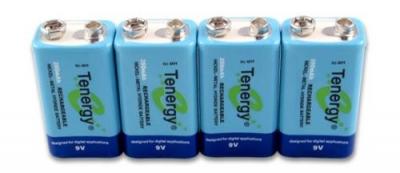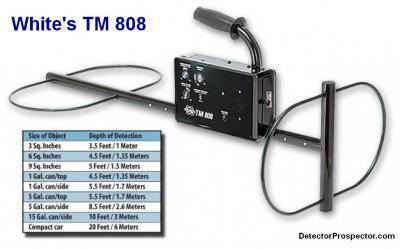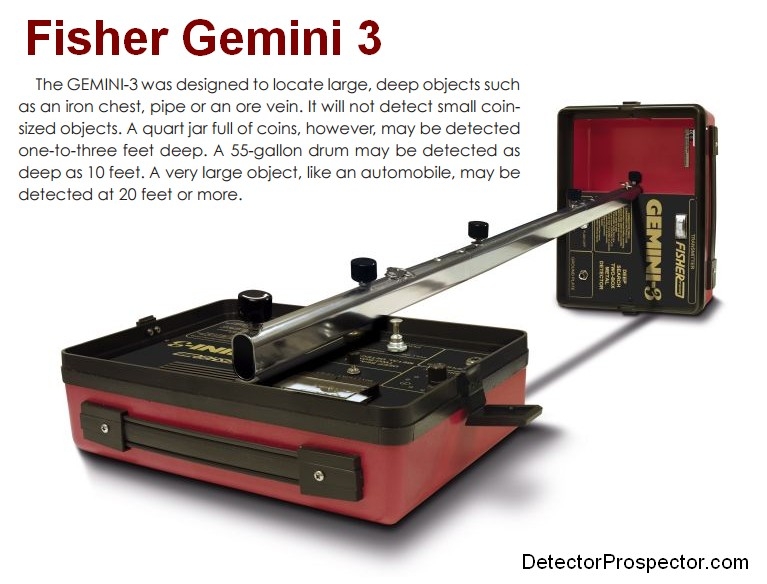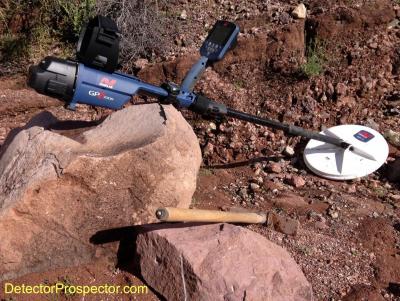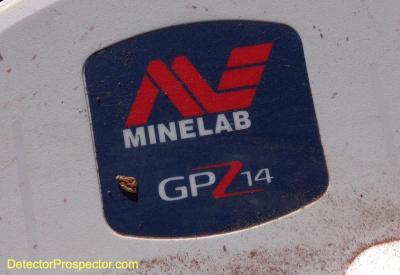-
Posts
19,711 -
Joined
-
Days Won
1,567
Content Type
Forums
Detector Prospector Home
Detector Database
Downloads
Everything posted by Steve Herschbach
-

Tools - Not Toys
Steve Herschbach replied to Rick K - First Member's topic in Detector Prospector Forum
Cool, I figured out how to automatically embed Facebook video so added it to Rick's original post. -

9 Volt Rechargeable Battery
Steve Herschbach replied to sjmpainter's topic in Metal Detector Advice & Comparisons
Don't know what to tell you. I decided running at proper voltage was more important to me. The mAH rating being longer just gives you more running time between charges, and since we are talking rechargeables anyway that did not seem like a big deal to me. I used these in my Gold Bug Pro when I had it and it ran a long time but I charged again before the battery ran dead so have no idea how long they will run in hours. Be careful as some Li-Ion batteries are actually a bit oversize and will not fit in your detector! -
The Minelab GPZ 7000 audio Smoothing function was directly derived from the Stabilizer control used on the GPX series. From JP at http://www.detectorprospector.com/forum/topic/715-gold-i-found-in-victoria-with-the-gpz/?p=6424 "On the subject of Audio Smoothing: Off on the GPZ = 20 on the GPX 5000, Low equals 15 and High equals 10." JP at the link referenced obviously prefers Smoothing to be left off. Some people are experimenting with higher audio smoothing settings combined with either hotter Gold Mode settings or higher Sensitivity settings or both. I think this is a good thing so do not go thinking it is "wrong". There is no right or wrong per se, it is all about what works for each prospector and their personal tolerance for noise or the lack thereof. Experimentation is good. I thought it would be informative to copy what the GPZ manual (page 66) has to say about the Stabilizer control. Warning: the GPX Stabilizer control is backwards. The highest setting if 20 is the off position. Lower numbers increase smoothing. So the GPZ at off is same as GPX at 20 (off). Note that the GPZ High setting is the same as the GPX default setting of 10. The default for the GPZ 7000 is Low Smoothing which is the equivalent of a setting of 15 on the GPX. One final note. RX Gain as referred to on the GPX is the same as the Sensitivity control on the GPX. From the GPX manual: I guess I should say that my preferences tend to follow JPs - I run with audio Smoothing off under nearly all circumstances. But I wanted to make this post to create a thread on the subject as it is very clear people are having success with other ways of thinking and again, I like out of box thinking. Lunks settings at http://www.detectorprospector.com/forum/topic/830-lunks-zed-settings/ are at the other end of the spectrum. I also liked Jason's observation on the subject at http://www.detectorprospector.com/forum/topic/827-minelab-video-gpz-7000-ground-type/?p=8276
-
I think I have a better idea for you Fred. I had a screen protector for an Amazon Kindle I never used, the clear type that stick on the screen. They make them for cell phones, etc. I just cut it to fit, stuck it on, and now no worries. The protector will get scratched eventually but then can be peeled off and replaced. And they are cheap. The main thing is have the screen 100% clean before sticking the protector on. The tiniest dust will make a little bubble under the protector.
-

9 Volt Rechargeable Battery
Steve Herschbach replied to sjmpainter's topic in Metal Detector Advice & Comparisons
Well, I got these Tenergy NiMH rechargeable batteries and all I can say is they have worked for me. I use them in my Gold Bug 2 and Garrett pinpointer. -
I officially approve absolutely anything that involves prospectors helping prospectors - as long as it is legal! Any forum related resources I can make available I will.
-

Detector`s For Kids
Steve Herschbach replied to sjmpainter's topic in Metal Detector Advice & Comparisons
Minelab Go-Find 20 "Looks like they are not available yet. Anyone know the arrival date." From http://www.minelab.com/consumer/knowledge-base/news?article=264803 "The GO-FIND Series will be available at your local dealer from May, 2015 onwards." I think Minelab is going to score with kids with the Go-Find series. I have a ton of respect for the Tesoro Compadre but I can't see a kid getting too excited by a one knob detector with no screen. The Go-Find has an undeniable "cool" factor I think kids will like, and the versions that sport a cell phone app are pure brilliance for the same reason. That said the Garrett Ace 150 is a sweetie in a more traditional design. -

Advice Please On Treasure Hunting Detectors
Steve Herschbach replied to arpax's topic in Metal Detector Advice & Comparisons
I like that both Fisher and Whites quote depths on buried cars. Real common item. -

Learning How To Use LandMatters
Steve Herschbach replied to vanursepaul's topic in Detector Prospector Forum
Thanks Paul, very helpful! -

48 ZED Nuggets Now, But Who's Counting
Steve Herschbach replied to russ's topic in Detector Prospector Forum
Russ, nice gold but also a really great photo - well done! -

High-trash Area Prospecting VLF Or PI
Steve Herschbach replied to karathound's topic in Metal Detector Advice & Comparisons
"I want something light and easy to navigate with as a first pass, knowing that I am going to be in high-trash areas as a starting point. Once I locate a promising area, I can then switch over to a higher-power detector like the GPZ and work the area more thoroughly." Perfect! Some areas are just so laden with trash you need a way to figure out where to concentrate your efforts with a GPX or GPZ without digging a ton of junk. I think using a VLF to simply find a nugget and then switching to a PI and working from the nugget as a center point is a great strategy. If no more gold develops, back to the VLF until another nugget turns up, then back to the high power unit. Basically patch hunting in junk, using the VLF to find the indicator nugget, with the big guns for cleanup. Please do let us know how it works out. -

Minelab Video - GPZ 7000 Ground Type
Steve Herschbach replied to Steve Herschbach's topic in Minelab Metal Detectors
And I often seem overly critical or argumentative and for that I apologize! No apologies needed jasong, your posts and contributions are greatly appreciated. I just thought it interesting our two different perceptions and as my wife is fond of saying - perception is reality. You are spot on actually as if you look at the GPX 5000 you will see that people tended to settle into some mode somebody recommended and that was that. Fine Gold was a big offender in that regard. It is easy enough to do when you find something that seems to work. And if all a person does is hunt one particular area it can be the correct thing to do. However, if a person moves around a lot it is imperative to learn what the settings do and adjust for different conditions. If one setting worked everywhere we would not need the controls, just a power switch. The settings on the detector are just like a manual shift car with a gas pedal. You need to learn when to be in second at half throttle, third at one third throttle, and in overdrive at full throttle. My GPZ settings are meaningless unless you know the exact context in which they are being used. Yesterday I was in a fairly low mineral situation running in High Yield/Normal, Smoothing Off, and Gain 12. Unit was generally stable with a little ground feedback and as hot as a pistol on small stuff. I like the GPZ more and more the more I use it. My SDC is in danger of becoming an orphan. -

Advice Please On Treasure Hunting Detectors
Steve Herschbach replied to arpax's topic in Metal Detector Advice & Comparisons
A detector for finding single coins is different than a detector made to find a large buried cache. Many treasure hunters looking for large items have used detectors like the Fisher Gemini 3 or White's TM 808. These are deep seeking detectors made for finding large buried items at depth. Specialty pulse induction detectors with large coils are also popular. For information and reviews of standard detectors used for finding coin size and smaller targets at shallower depths visit https://www.detectorprospector.com/magazine/steves-guides/steve-guide-gold-nugget-detectors/ Fisher Gemini 3 For Prospecting Important note: The chart and depths quoted are based on optimistic low mineral conditions. Real life results will probably be less impressive. Note: Newer thread on subject here. -

Minelab Video - GPZ 7000 Ground Type
Steve Herschbach replied to Steve Herschbach's topic in Minelab Metal Detectors
"It seems like everyone is in a rut where we are stuck on no audio smoothing and Difficult, and I can't understand why." That's funny, I do not see everybody as being stuck on anything. Different forums? Somebody making a suggestion for settings and an assumption that is all they ever try or use? Seems like plenty of experimenting going on to me. The posts by Lunk and yourself prove it. As far as smoothing goes, that came from JPs general aversion to smoothing and others following suit. As I mentioned at http://www.detectorprospector.com/forum/topic/800-five-rp-bits-with-some-new-settings/?p=7794 there is always going to be a battle between sensitivity and stability depending on peoples personal desires and tolerance levels. I cannot tolerate totally silent detecting and there is a point where there is too much audio feedback. Where those two things balance is very much an individual thing. Some people can listen to a barrage of what I think is noise and hear a symphony instead. Some people really do want the machine to run smooth as butter with nary a variation until a target is heard. There are parallels between prospecting and hunting thick ferrous trash around old habitations. The best iron hunters prefer the detector to report everything and to listen for nuances in the signal. There is a real difference between blended and gated audio that few appreciate. Others want machines to shut the heck up on ferrous and just report non-ferrous. And some people want a prospecting detector to offer constant audio feedback on ground variations while also hearing the gold. Others want to hear just the gold. The bottom line as I see it is you have to find a level that makes your own personal detecting experience reasonably pleasant. I find the GPZ 7000 to be so powerful that it is pretty forgiving of settings within reason and will simply find gold if I get over it. -

One Brain Cell Working AKA Deus Chronicles
Steve Herschbach replied to goldbrick's topic in XP Metal Detectors
Excellent, we can compare notes on the Racer. Mine will be getting use nugget hunting soon. It is more than capable and I have just been too busy with other stuff so I used the Gold Racer as an excuse to sort of ignore the Racer. Chris and I were out exploring hydraulic pits the last few days (more hiking than detecting) and all I took was my GPZ. Yesterday I looked at Chris and swore I would never ever be caught out without a VLF handy ever again. I can tell you this. My Racer comes with gain set at 70. There are some kind of break points at 69 and 39 and so if you get into bad ground and lots of overloads dropping to 69 can do wonders. Do not overlook beach mode for dealing with bad ground either. I am still experimenting and comparing to FORS CoRe and FORS Gold and may have more to say later. -

One Brain Cell Working AKA Deus Chronicles
Steve Herschbach replied to goldbrick's topic in XP Metal Detectors
Hi Merton, As you know I did not keep mine long, but it ran smooth enough for me in the Goldfields program, and in heavy magnetite laden ground in two locations. Pretty much on par with the Gold Bug Pro I had at the time. -

High-trash Area Prospecting VLF Or PI
Steve Herschbach replied to karathound's topic in Metal Detector Advice & Comparisons
Hi karathound, Since you already have a MXT that is the obvious first choice. Give it a go - it is a capable machine. The problem of course is hot red ground, or any really bad ground conditions. VLF detectors struggle under those conditions and so any choice is going to be problematic. In milder ground VLFs come into their own. The CTX question here is a bit of a red herring, as you have stated you have no need of a multi-use machine, and I assume especially not a very expensive and heavy one. I do have a CTX and frankly I would grab a single frequency unit first. That said I think characterizing the CTX as useless for the application is harsh in that some people are indeed having success with them. I am sure I could go find gold with mine. Mid-frequency VLF units are very competitive and most will do the job if you learn them. The Nokta and Racer I have concerns in the absolute worst ground as they exhibit a tendency as extremely high gain units to go into continual overload in such situations. I am trying to gather more data on that myself and have been watching the posts by Narrawa in Oz with great interest for the same reason. I am waiting still on the new Gold Racer with high hopes but it remains to be seen how that pans out. The Gold Bug Pro and the new variant, the F19, are very capable units, and a bit of a knee jerk recommendation on my part due to the proven success worldwide of that particular circuit. Though they struggle like all VLFs in severe ground. Leaving it at the MXT for now I do ask myself what single VLF out of all I have which one I would keep for gold prospecting if I could keep only one. Other detectors have come and gone over the years, but there is only one model I have owned and used consistently since the day it came out about 20 years ago. That would be my Fisher Gold Bug 2. Not the deepest by far, but it has a very effective iron disc circuit. Better yet, it is a dedicated gold unit that still easily hits gold not PI can touch, even the SDC 2300. Mine worked so well in Oz I left it in the hands of a new member of the Gold Bug 2 fan club, Jonathan Porter. The MXT is capable, and you already own it. Unbeatable combination I think. Good luck!! -

Minelab Video - GPZ 7000 Ground Type
Steve Herschbach replied to Steve Herschbach's topic in Minelab Metal Detectors
Obviously the Gold Modes are causing far more questions for people than the Ground Type setting. My only note here is to say I have been finding the Normal/High Yield combination quite possible at various locations in California and Nevada, typically where there are lighter colored soils. Some areas it is a total no-go but in the U.S. at least be sure and do not fall into the habit of always using the Difficult setting. Give Normal a try, and go back to Difficult if need be. The sensitivity to small items gives the SDC 2300 a serious run for the money, even with the larger coil, while delivering more depth on larger nuggets. A nice summary explanation of how the ground modes may work by Goldhound at http://golddetecting.4umer.net/t21336-link-showing-a-minelab-vid-gpz-7000-gold-mode#207316 -
Dealing with aging relatives and illness is a difficult situation. I am glad you got out and enjoyed yourself. A really great story and adventure - thanks for sharing!
-
Thanks guys but the gold is something I probably would not normally mention. I just liked the photo of the GPZ - good contrast and lighting, and needed an excuse to post it.
-

Minelab Video - GPZ 7000 Gold Mode
Steve Herschbach replied to Steve Herschbach's topic in Minelab Metal Detectors
The main problem is trying to equate the weight of a nugget with the time constant of a nugget. People want to think in terms of weight ranges when metal detectors do not detect weight. The correlation between time constant and weight is loose at best. A large specimen with ounces of dispersed low purity gold will be much harder to detect than a solid lump of purer gold weighing half as much. -

Minelab Go Find Metal Detector
Steve Herschbach replied to Sourdough Scott's topic in Minelab Metal Detectors
These detectors do not replace the X-Terra models. They are entry level detectors positioned below the X-Terra models in the unit lineup. Notice how in the last year Minelab has not replaced models, but filled or created new price points. -
When Chris and I were at the Mesa show last month Jim P took us out to Little San Domingo one day for a few hours. I only got this one little nugget but was happy to find my first nugget at LSD. We visited with Kevin Hoagland at Gold Basin after that, again for only a few hours, and I snagged my first Gold Basin nugget. They can go next to my couple little nuggets from Rye Patch. Not much gold but kind of rounded the bases with the GPZ anyway and had a good time doing it.
-

The Passing of a Metal Detecting Great!
Steve Herschbach replied to delnorter's topic in Garrett Metal Detectors
Truly one of the pioneers of metal detecting and an early leader in nugget detectors. The 15 kHz Garrett Groundhog found huge amounts of gold in the early days. I don't know if anyone from Garrett follows the forum but my condolences to the family.


